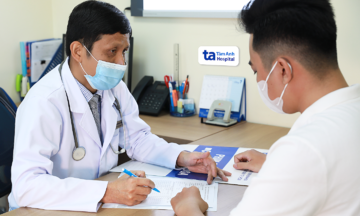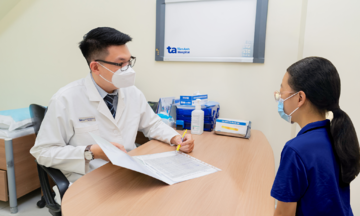The National Center for Health Communication and Education recently completed a survey assessing public understanding of HPV. This survey, part of the nationwide communication campaign "For a Vietnam Free of the HPV Burden," ran from 21/4 to 23/5 and involved over 5,400 participants. Here are a few common misconceptions about HPV highlighted by the survey results:
HPV only causes cervical cancer and genital warts.
76.9% of survey participants believed HPV causes cervical cancer, followed by 65.7% who associated it with genital warts. Only 32.4% knew that HPV can cause various other cancers.
The high awareness of cervical cancer demonstrates the effectiveness of communication efforts regarding this disease. However, the public's understanding of other HPV-related cancers remains limited, suggesting the need for broader communication about the full spectrum of HPV-related diseases.
Monogamy prevents HPV infection.
40.3% of participants thought HPV is only transmitted through unsafe sex, meaning having multiple partners. 26.2% of male participants believed safe sex eliminates the need for preventative measures, while 76.9% thought condoms are an effective preventative measure.
 |
Even individuals in monogamous relationships need to take precautions against HPV. Illustration: Vecteezy |
How to effectively prevent HPV?
HPV is a common sexually transmitted virus. Around 200 types have been identified, with over 30 typically transmitted through sexual contact. Genital HPV is categorized into two groups: low-risk types, usually 6 and 11, which cause genital warts; and high-risk types, around 16 of them, which can cause lesions in the cervical epithelium or cancer of the cervix, vagina, anus, etc. In most cases, the body clears HPV. However, persistent infection can lead to cancer and other related diseases.
HPV infection often occurs soon after the first sexual encounter, and the risk increases with the number of partners. Even individuals in monogamous relationships are still at risk.
Condoms, a common safe sex practice, can reduce the risk of HPV transmission but cannot completely prevent it because they don't cover all genital skin. A 2000-2005 study of 82 female university students in the US found that even with 100% condom use, condoms only protected against HPV in about 70% of cases.
To proactively prevent HPV, individuals can combine several strategies: maintaining a healthy lifestyle, avoiding smoking, increasing physical activity, ensuring a balanced diet, and practicing safe sex. Vaccination is also key. Additionally, women aged 21 to 65 should undergo regular cervical cancer screening as recommended by healthcare professionals. Circumcision in men can help reduce the risk of HPV transmission.
Van Ha
To raise awareness about HPV prevention, the Ministry of Health launched the nationwide communication campaign "For a Vietnam Free of the HPV Burden" with the call to action: "Individual prevention - Community free of the HPV burden." Consult with a healthcare professional and learn more about HPV and the campaign at the website hpv.vn.
This content was jointly compiled by the National Center for Health Communication and Education, the Ministry of Health, and MSD, verified by the National Center for Health Communication and Education, the Ministry of Health, and sponsored by MSD for educational purposes.












